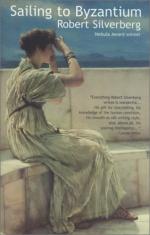|
This section contains 4,076 words (approx. 14 pages at 300 words per page) |

|
SOURCE: “Byzantine Platonism in Yeats,” in Classical Journal, Vol. 54, No. 7, April, 1959, pp. 315-21.
In the following essay, Notopoulos considers the impact that Byzantine imagery and history had on Yeats's poetry and notes the Platonic elements in “Sailing to Byzantium.”
The poem “Sailing to Byzantium,” one of Yeats' best, is also a noteworthy Platonic lyric.1 The contrast in the poem between the “sensual music” and “the monuments of unaging intellect” is the mature expression of a Platonic mood, impelled to expression and shaped by Yeats' interest in Plato and Plotinus, his friendship with Stephen MacKenna and his admiration of MacKenna's gifted translation of Plotinus.2 In his desire to be gathered into the “artifice of eternity” and in his construction of a Platonic Reality, Yeats has chosen the imagery of Byzantium which held a powerful grip on his imagination after his visits to Italy where he beheld the Byzantine mosaics...
|
This section contains 4,076 words (approx. 14 pages at 300 words per page) |

|


